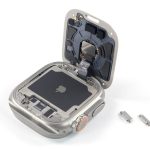Willie B. Thomas/Getty Images
- Most of the people featured on TLC’s Extreme Cheapskates have six to seven figures in their bank account.
- They may take budgeting to the extreme, but we can learn a thing or two from their awareness of every penny spent and earned.
- If a millionaire cheapskate can haggle and ask for free stuff, why can’t you?
- Read more stories from Personal Finance Insider.
I was today years old when I found out that most people featured on TLC’s Extreme Cheapskates have six to seven figures worth of savings in their bank account.
We may laugh at their extreme dumpster-diving, haggling, couponing, stockpiling, cost-cutting ways, but these cheapskates are laughing all the way to the bank.
Their extreme saving techniques include only using one lightbulb at a time in a four-bedroom house, peeing in a jar to save money on the water bill, and biking to a friends’ house 70 miles away to save on gas.
After binge-watching Extreme Cheapskates on YouTube, I gathered five saving tips from the show that, when used in small doses, can make a big difference in your everyday life. To be clear, I’m not encouraging anyone to pinch pennies like they do. However, some of the money-saving concepts could apply to all of our lives.
1. Knowing where your money goes make a huge difference
One thing all of the cheapskates have in common? They have detailed accounts of every penny that flows into and out of their lives.
Millionaire cheapskate Victoria Hunt checks her electric meter every day, calculates her upcoming bill, then brainstorms different ways to cut energy costs to make her millions last a lifetime. She dreamed that she would live to be 116 years old, and she has budgeted every penny of her fortune to be able to live comfortably until she dies.
Hunt’s story shows us that awareness leads to solutions. Checking your electric meter everyday might get obsessive, but spending five minutes at the end of the day (or week) checking your expenses, taking time to reflect on how you’re spending your money, can go a long way.
Binge-watching the show motivated me to use a budgeting app again, keep a spreadsheet to track my debt repayment progress, and use a bullet journal to cultivate my awareness around spending.
2. There’s no shame in asking for free stuff
Fifty-year-old Aimee Elizabeth from Las Vegas earned $5.3 million from real estate and stock market investments, but refuses to spend a dime. She had a business trip scheduled in Los Angeles, and planned on driving her beat-up 1996 Mustang all the way there, until a mechanic repossessed her car for safety reasons.
Instead of forking over the cash for a flight, she asked her ex-husband to drive her to the airport. Elizabeth proceeded to ask the pilots flying small planes if any of them were going to Los Angeles that day, using her charm and good looks to convince them. Eventually, one pilot agreed to take her there and back at absolutely zero cost.
Watching people haggle on Extreme Cheapskates had me thinking: If a millionaire can ask for a free flight, why can’t I find the courage to ask for a ride to the airport? Or ask a friend to pick up a dinner tab when I’m in between checks? Or, to take it a step further, ask Whole Foods if they have any freebies or discounts on food they’re about to throw out at the end of the night?
3. People will still date or marry you even if you’re cheap
Holding off on dating or committing to a partner because you’re short on funds? Let these cheapskates embolden you.
Bachelor Greg Insco, 29, starred in a 2012 episode called “The World’s Cheapest Date,” where he ordered one single rib and a free cup of water. His date, Brandy, ordered a pulled pork sandwich, and when the food arrived, Insco immediately took half of the sandwich and fries from her plate to save cash. At the end of the date, Brandy admitted that it was the cheapest date she’d ever been on, but that she would go on a second date with him.
Additionally, cheapskate couple Karissa and Rick Parrans share everything — a toothbrush, a stick of deodorant, Q-Tips, showers. They even went shopping for a shared casket on their Extreme Cheapskate episode. Each week, the couple sits down to track their spending, even competing to see who spent the least.
If two people can talk so openly about sharing a casket, I can be bold enough to be honest about my money boundaries early in the dating game. I’m learning that it’s more than okay to ask a date to go dutch, or to pick a place that won’t break the bank. As Insco said in his Cheapskates episode, “I want someone to love me for me, not my money.”
4. Haggling can work
Some people on this show get extreme pleasure from haggling with small business owners and thrift shop clerks, even if it only knocks the price down by 25 cents.
On the show, Jeff Yeager says his haggling has a 10% success rate, “but I always, always ask.” Yeager stopped by a mom-and-pop natural grocery store for some coconut oil to use in his homemade deodorant recipe. Christina, the store owner, was surprised by his haggling efforts but eventually caved and agreed to lower the price of coconut oil by $1.
As someone who supports small businesses, I can’t endorse haggling with small business owners who are already struggling during the pandemic. But watching this show reminded me that I can always haggle with my phone, cable, or internet provider and check if there are deals that I’m leaving on the table each month.
5. Being a cheapskate is good for the environment, too
Are extreme savings not enough of a motivation to get you to cut back on everyday costs? Maybe doing good for the environment can give you extra kick to start saving.
A common theme among self-identified cheapskates is timing their showers and limiting their electricity usage to save money. Some people even wash the clothes in the shower with them to save money on laundry, and cut their water bill in half at the same time. Hunt, the aforementioned woman who tracks her electric usage, even pees in a jar to limit the number of times she flushes the toilet and save water. She then uses her collected pee as compost for her vegetable garden.
Ok, I’m probably never going to pee in a jar. But aligning money-saving tactics with sustainability is a great motivator for me to shop at thrift stores, take care of my belongings so that I don’t need to buy new things as often, and make natural cleaning solutions with ingredients from my pantry in a pinch.
Powered by WPeMatico





